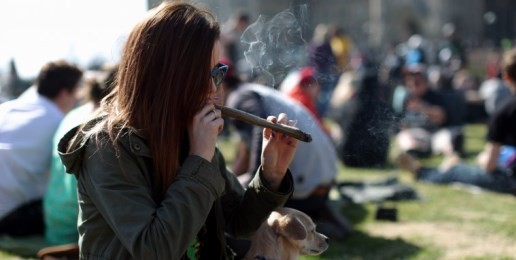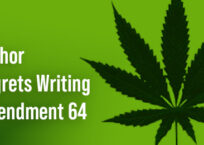
Written by Rev. Mark H. Creech
Chuck Swindoll tells that great story about the fellow who fell in love with an opera singer. He didn’t know her, nor had he ever seen her any closer than the third balcony and with a pair of binoculars. But he was absolutely convinced life would be grand married to a woman with a voice like hers. He was certain her mezzo-soprano vocals would take them through whatever might come. After a whirlwind romance and a quick wedding ceremony, the two were off for their honeymoon.
As she prepared for their first night together, the man’s mouth flew wide-open in total shock. She took out her glass eye and placed it in a container on the nightstand. She then pulled off her wig, ripped off her false eyelashes, popped out her dentures, unstrapped her artificial leg, and donned a smile at him as she slipped off her glasses that hid her hearing aid. Completely horrified, the man gasped, “For goodness sake, woman, sing, sing, SING!” [1]
During the last election, two more states, Alaska and Oregon, approved by referendums the legalization of recreational marijuana. The District of Columbia also approved a voter initiative that is subject to the review of Congress. Colorado and Washington had previously passed similar ballot measures legalizing cannabis in 2012. It may take a while, time enough for the full import of their decision to be felt, nevertheless, it’s inevitable these states will discover the legalization of pot didn’t turn out as they expected.
A common argument in favor of legalizing marijuana is that the Prohibition of Alcohol was a complete failure. Thus it’s argued that Prohibition of Marijuana can only result in the same.
But was the Prohibition of Alcohol in our nation a total flop? Hardly!
Kevin A. Sabet, in his excellent book, Reefer Sanity, cites a professor of criminal justice at Harvard’s Kennedy School of Government, Mark H. Moore. Moore researched the question of whether Alcohol Prohibition was actually the misguided policy people have been led to believe. His findings provide a better understanding of that period in American history.
He notes:
- “Alcohol consumption did decline significantly during Prohibition, one indication being that the rate of cirrhosis deaths for men, which had been 29.5 per 100,000 men before Prohibition, fell to just 10.7 deaths per 100,000 during the ban.
- “State mental hospital admissions for alcoholic psychosis also underwent a dramatic decline, falling from 10.1 per 100,000 persons to less than 5 at the height of Prohibition.
- “Arrests for disorderly conduct and public drunkenness fell by half.” [2]
Sabet also points to a recent example of the success of Prohibition in Barrow, Alaska. In that city, residents were weary of the crime and other deleterious effects of alcohol. So in 1994 they banned it within the city limits. The results?
- “Crime decreased 70 percent within the city.
- “Alcohol-related emergency room visits went from 123 the month before the ban to only 23 the next month.
- “Once the ban was lifted and alcohol became available in the city again, local detoxification centers filled with patients and alcohol-related murders were on the rise again.” [3]
Sabet concludes that what happened in Barrow, Alaska, is a microcosm of what actually happened during the fourteen years national Prohibition was in effect – the public health improved. Moreover, he says that he isn’t arguing for the return of Prohibition, but only seeks to show that whenever a drug is illegal, public health is better “since the drug is neither commercialized nor as normalized as it would be if it was legal.” [4]
A recent major review in the scientific journal Addiction makes it abundantly clear the adverse effects of cannabis use on mental and physical health. Key conclusions from Professor Wayne Hall of the World Health Organization include:
- “The risk of car crashes double if marijuana users drive while intoxicated. The risk increases substantially if the users are also drunk.
- “1 in 10 regular marijuana users will develop dependence. The rate is 1 in 6 for those who begin using during adolescence.
- “Regular marijuana users double their risk of experiencing psychotic symptoms and disorders, especially if they have a personal or family history of psychotic disorders, and if they begin using during their mid-teens.
- “Regular marijuana use in adolescence doubles the risk of being diagnosed with schizophrenia or reporting psychotic symptoms in adulthood.
- “Regular adolescent marijuana users have lower educational attainment than non-users and are more likely to use other illicit drugs.
- “Regular marijuana use that begins in adolescence and continues through adulthood impairs cognitive development.
- “Regular cannabis smokers have a higher risk of developing chronic bronchitis.” [5]
Professor Hall’s report is the result of twenty years of marijuana research. Add these problems to the Mount Everest of troubles from alcohol use and abuse – health issues, drunk driving, underage drinking, crime, broken families, etc. God help us!
Somebody say, “For goodness sake, America, sing, sing, SING!”
This article was originally posted at the ChristianPost.com website.





















